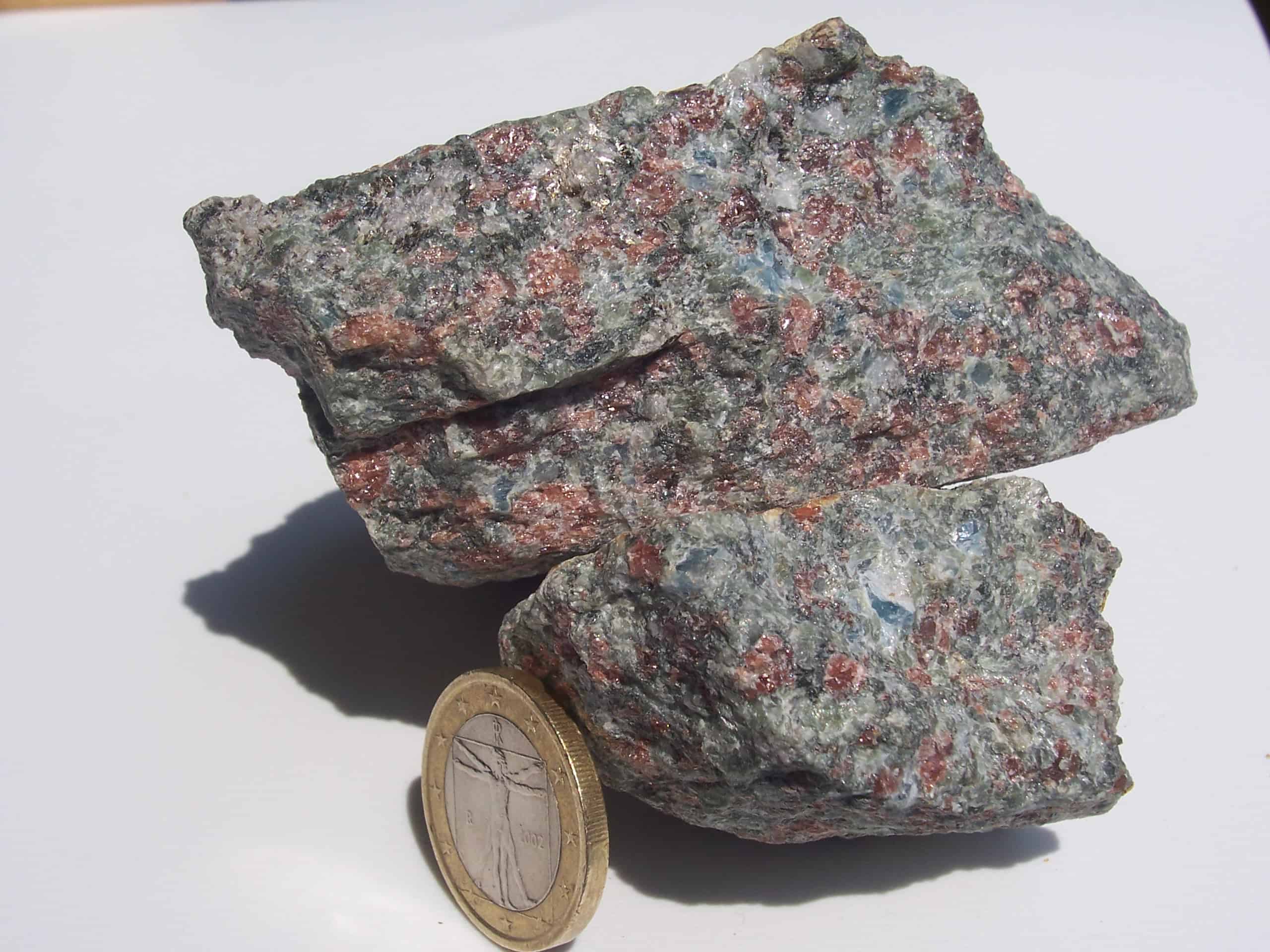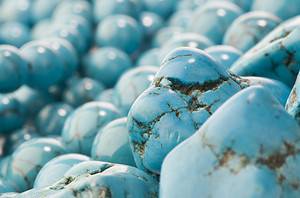When we think of the word metamorphosis, we usually think of caterpillars turning into butterflies, or perhaps an actor taking on a role and becoming that character so convincingly that we can’t tell where the actor ends and the character begins. However, the term can apply to rocks, as well.
The term broadly means that one rock is changed into another kind of rock. When an existing rock does this, it is referred to as a metamorphic rock.
There are three types of rocks on the earth: metamorphic, sedimentary, and igneous. Both sedimentary and igneous rocks started out at something else while metamorphic rocks started out as rocks. Now, though, through these unique processes, they have changed forms.
Very specific conditions are required to turn a rock into another type of rock, as you’d probably assume based on what most of us know or perceive about these solid materials.
Let’s take a look and see how they’re formed.
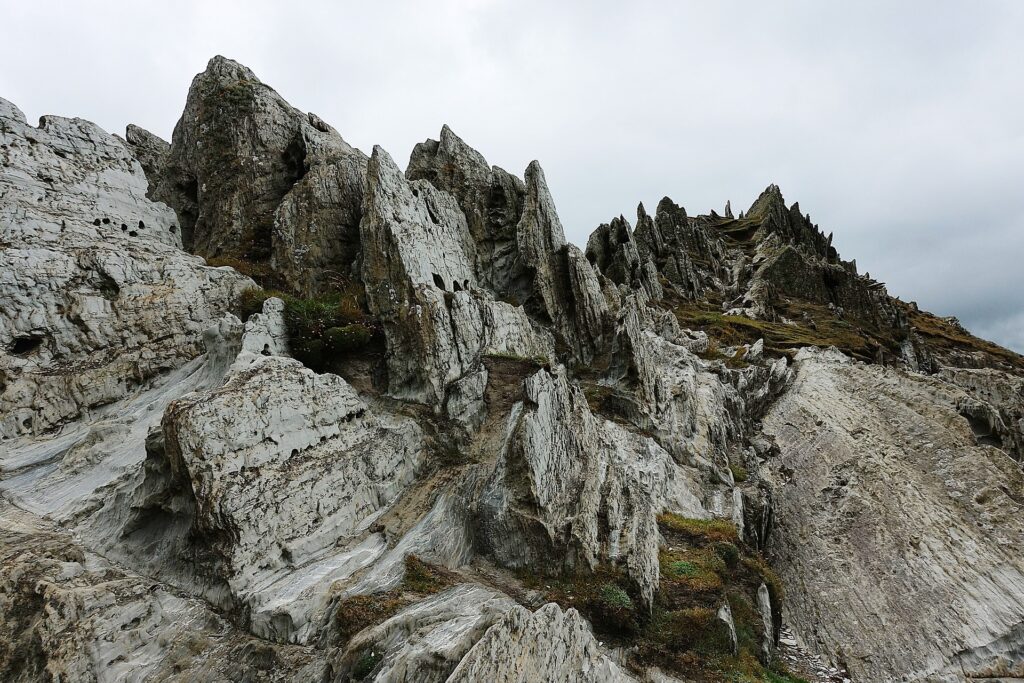
Mountains are formed in belts in what is known as regional metamorphism.
©
The Quick Answer
Basically put, metamorphism, the process(es) which create metamorphic rocks, use extreme heat via indirect contact, immense pressure, or a combination of the two to create new rocks of “old” rocks.
The Rock Cycle
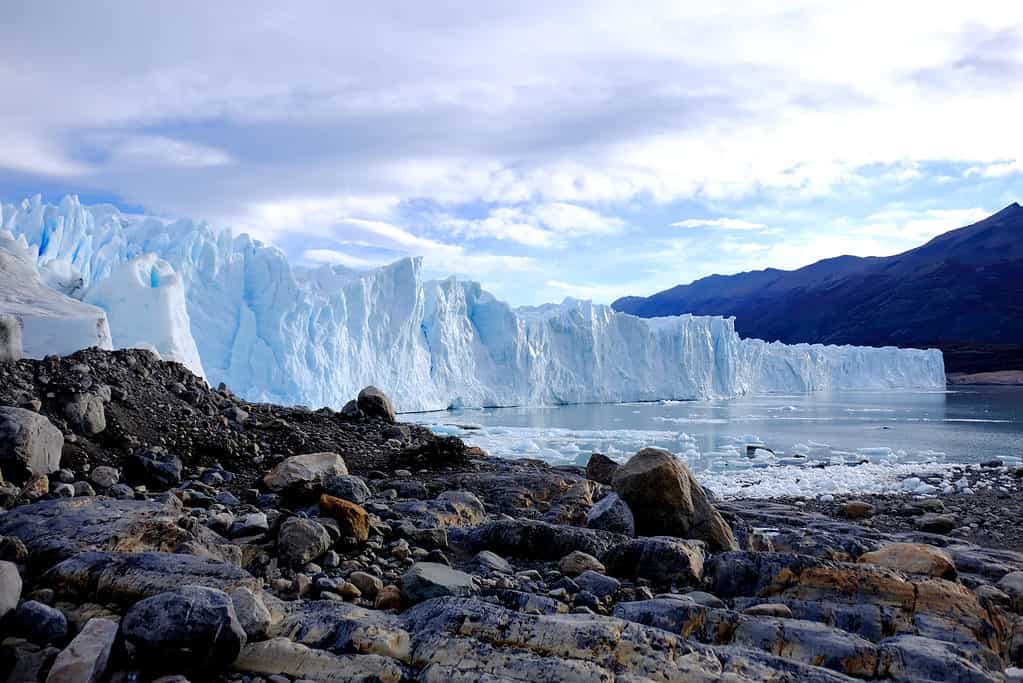
There are many types of rocks within igneous, metamorphic, and sedimentary rocks.
©natkom/Shutterstock.com
To initiate metamorphism in rocks, either immense pressure, extreme heat, or a combination is required. This process usually happens deep within the Earth, whether beneath solid land or in the ocean floor. It may occur upon collision of the tectonic plates, as well.
Because this process happens so deep within the planet, away from most human contact, these types of rocks (metamorphic) are far less common than sedimentary or even igneous rocks. There must be a geological uplift for these rocks to surface where we humans may find them and use them. As soil erodes over time, this uplift occurs, revealing these deeply bedded rocks. In other words, as time progresses, the rocks are “lifted” to the surface of the planet by natural and unnatural occurrences such as earthquakes, erosion, drilling, mining, and others.
There are multiple types of metamorphism, though, which form these rocks.
What is Metamorphism in Rocks?
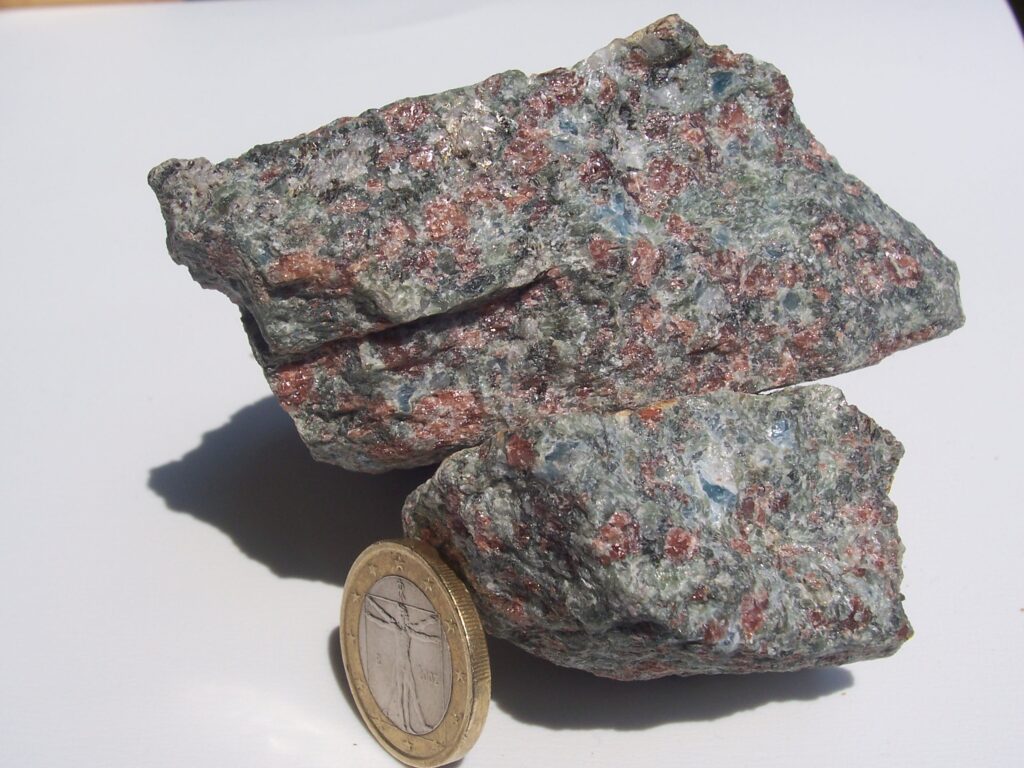
Eclogite, one of the many types of metamorphic rocks
©
Metamorphism is a natural process that occurs within the Earth’s crust or deep within at the subduction zone (tectonic plates). Super-hot mineral-rich fluids, extreme pressure, extreme heat, or some combination thereof initiates the process. It changes existing rocks, such as sedimentary rocks, igneous rocks, or even previously metamorphized rocks. The rocks are not melted but rather flattened and reshaped. Chemical changes occur in the minerals contained within the existing rocks. Extreme heat, pressure, or mineral liquid contact changes the actual makeup of the rocks. These new rocks, formed by these processes, are metamorphic rocks.
Metamorphic vs. Igneous Rocks: Is There a Difference?
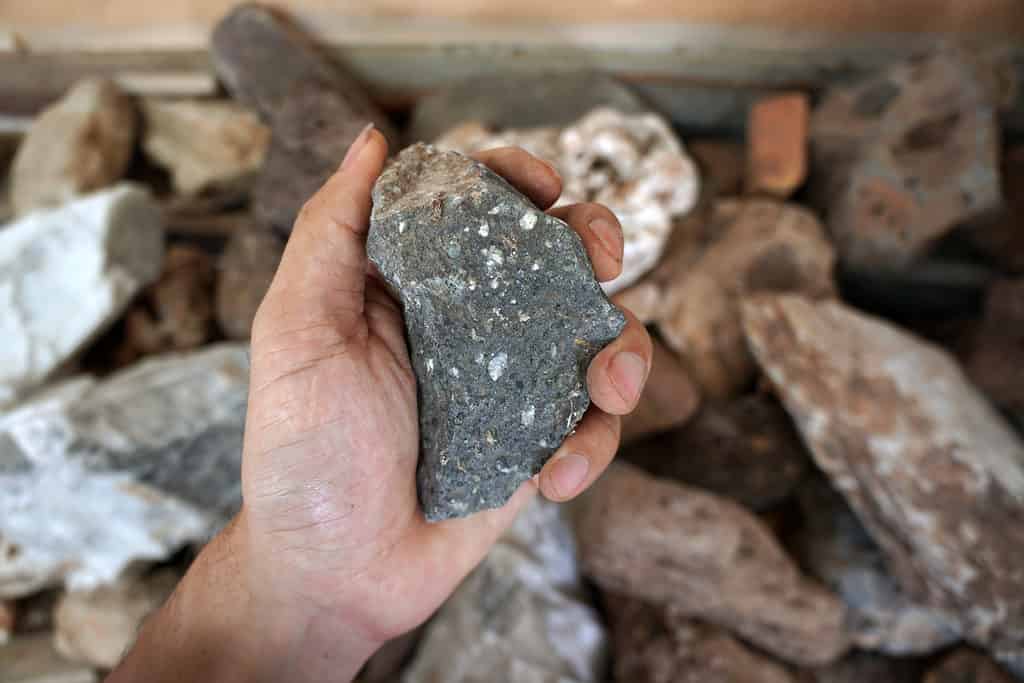
Andesite is an extrusive igneous rock named after the Andes Mountains where it is found in abundance.
©Yes058 Montree Nanta/Shutterstock.com
A lot of folks confuse igneous rocks and metamorphic rocks, which makes sense. Both rocks are “changed” in a sense, often by exposure to heat. However, they are two different types of rocks.
Chemical processes or the compaction of different types of rocks change metamorphic rocks. Igneous rock is rock or magma that melts and cools to form this new type of rock. You can learn more about process through our breakdown on igneous rocks.
Extreme heat produces both metamorphic rock and igneous rock. Magma or lava forms igneous rocks. Indirect contact with this magma or lava, or extremely hot mineral fluids, forms metamorphic rocks.
Regional or Burial Metamorphism
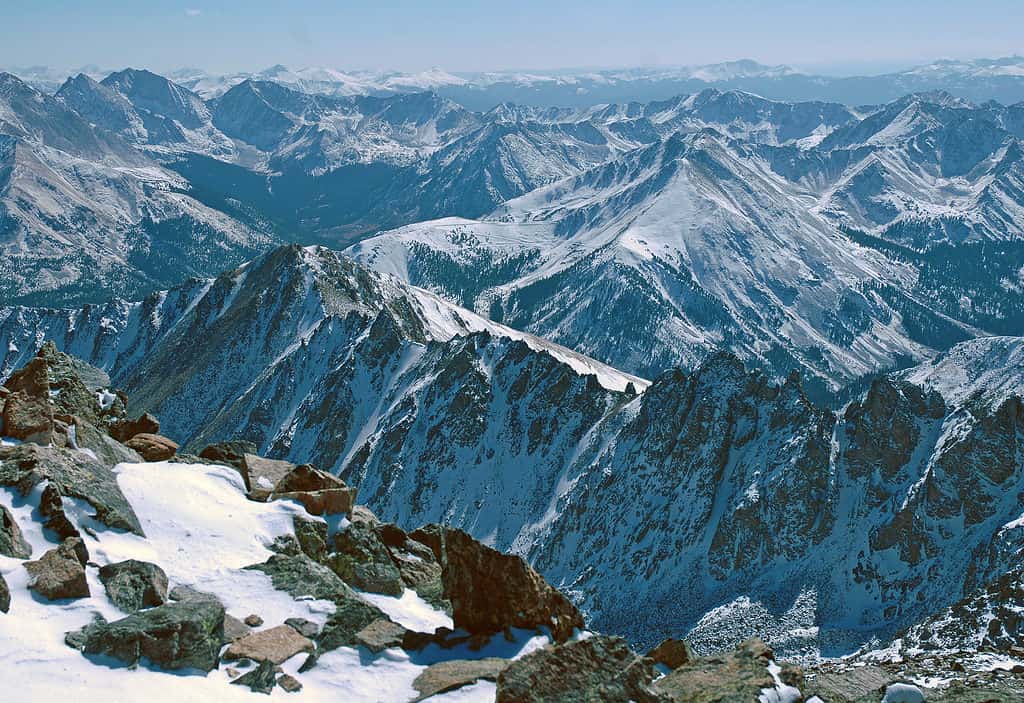
Rocky mountains around the world are typically formed in metamorphic response to shifts in the Earth’s crust or tectonic plates.
©Nyker/Shutterstock.com
When metamorphism happens on a deep, massive level, due to deep burial and immense pressure, often at subduction zones within the Earth. This form of metamorphism usually occurs in long belts, which is why the name “regional” has been attached to this form. This is often how mountain ranges are formed.
Regional metamorphism describes a metamorphic rock that has been altered due to deep burial and great pressure, for example at subduction zones. This type of metamorphic rock tends to occur in long belts. Different types of metamorphic rock are created depending on the gradients of heat and pressure applied.
Thermal or Contact Metamorphism
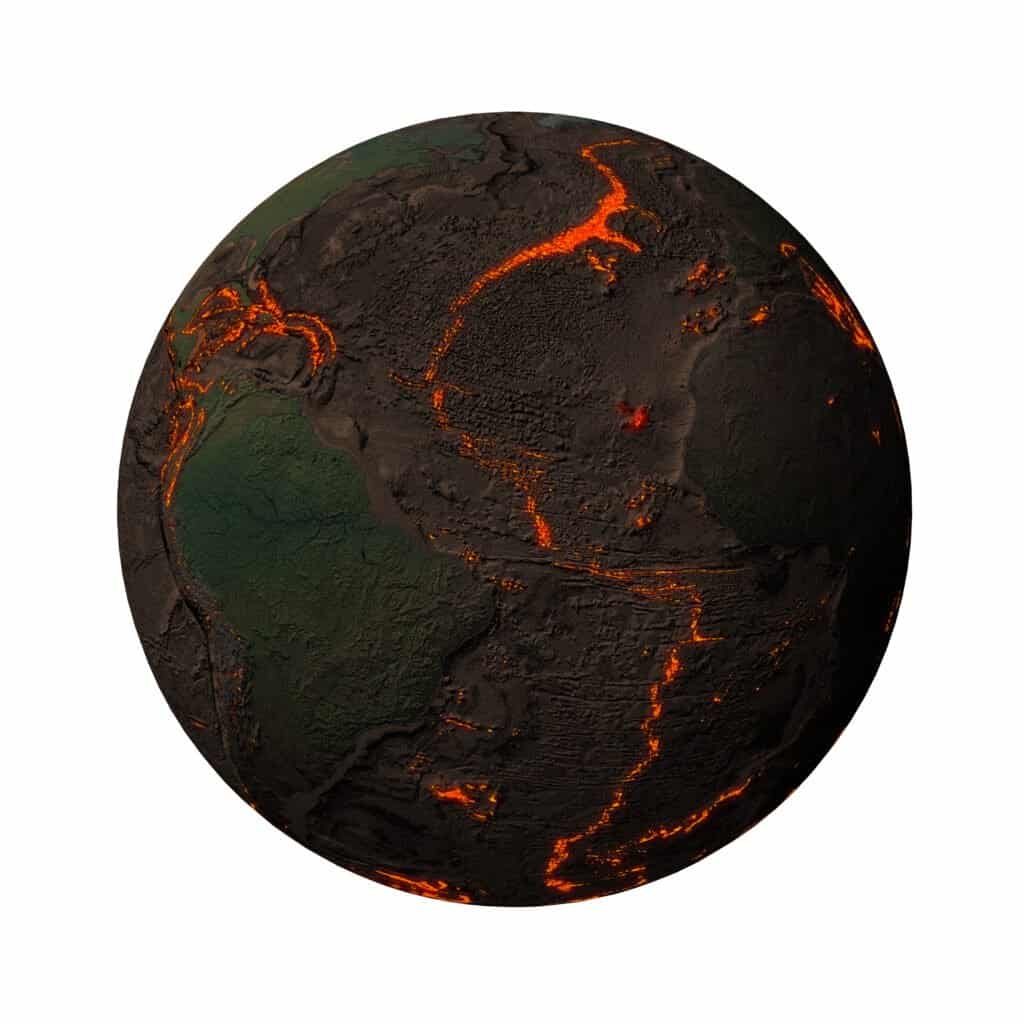
Beneath the Earth’s surface, there is a huge amount of magma flowing, creating the right environments for heat-based metamorphism.
©visdia/Shutterstock.com
As the name indicates, extreme heat induces thermal metamorphism. This type of metamorphism usually occurs near fissures or igneous intrusions. These are areas deep within the Earth’s crust where magma forms and expels, upwelling to create environments of extreme heat. It is within these environments that thermal metamorphism occurs. The rocks here are in contact with igneous rocks but not with magma.
Mylonitic or Cataclastic Metamorphism
Another metamorphic process will use extreme pressure beyond 100 megapascals of force (1 megapascal is equivalent to 145 pounds per square inch). This occurs within the Earth’s crust where the tectonic plates shift and create this immense force. When the plates meet, they create friction, which causes faults or cracks, which in turn creates massive force into pressure. As the plates rub together, shearing and crushing of the plates occur, which is the primary cause of this type of metamorphism. The result is smaller, broken particles making up the rocks.
Catclastic rocks are rocks turned into particles. Even tinier particles ground down by this massive pressure create mylonitic rocks.
Dynamothermal Metamorphism
In some circumstances, both heat and pressure work together to form metamorphic rocks. In this case, the original minerals become wholly new minerals with new textures. This form of metamorphism occurs along mountain belts, ranges, and tectonic plates. These rocks are some of the most commonly formed metamorphic rocks.
Classification Of Metamorphic Rocks
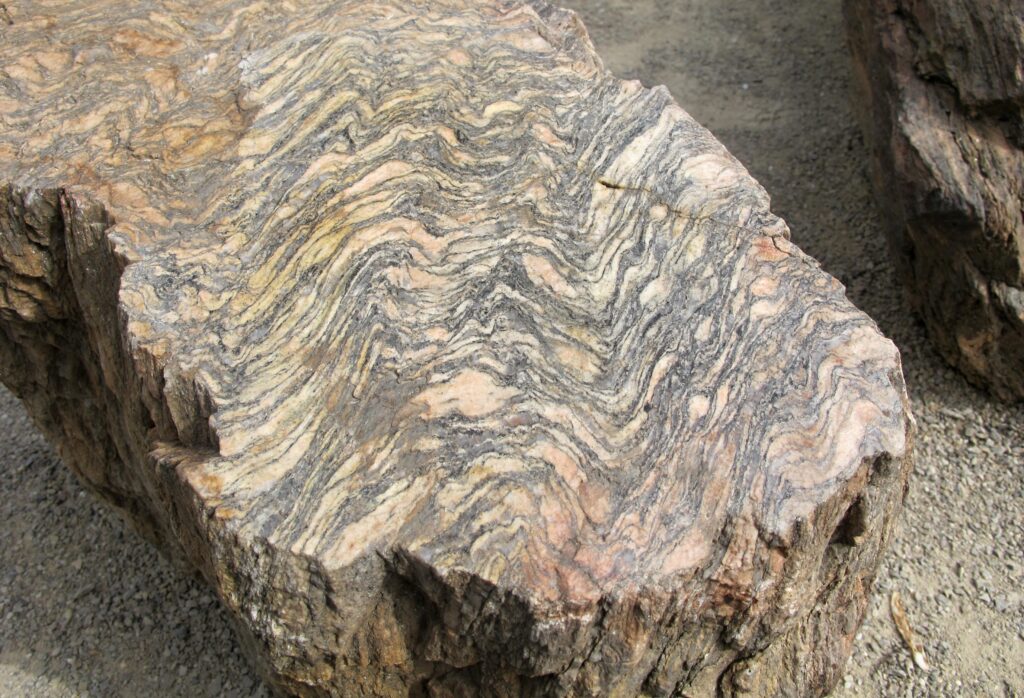
Gneiss, a metamorphic rock
©
Metamorphic rocks are formed in different ways, as noted above, but the results are either foliated (banded, striped, or layered) rocks or non-foliated (non-striped or banded) rocks. These are the two classifications of metamorphic rocks.
Foliated Rocks

Slate rock, naturally shaped heart-like. While less obviously banded, if you look at slate you can see patterns very distinctively giving it the unique texture it has.
©
When minerals within the new rocks align, they create foliated metamorphic rocks. This is the mass pressure at work, often in conjunction with immense heat, elongating the minerals within and creating foliated (striped, banded, or striped layers). Foliated metamorphic rocks are easy to identify by these visible bands or stripes within the rocks. Schist, gneiss, and slate are all solid examples of these types of metamorphic rocks.
Non-Foliated Rocks
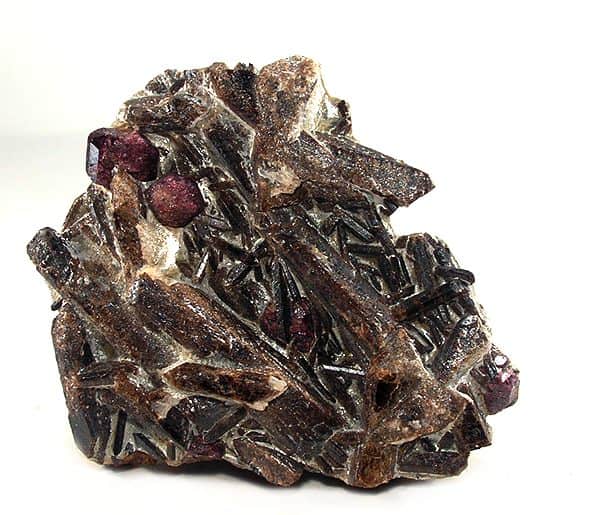
Metamorphic rock containing staurolite and almandine garnet – a distinctively metamorphic rock without the banding.
©
Non-foliated metamorphic rocks are made in similar ways to foliated, but there are some distinctions in the process. Non-foliated rocks occur when minerals are irregular, not elongated or uniform. Under the massive pressure, these minerals compress but don’t align into sheets or platy layers.
Some non-foliated metamorphic rocks include marble, soapstone, and hornfels.
Metamorphic Rocks Examples

Marble is one of the most well-known metamorphic rocks out there, as it has been used for millennia for carving into statuary and creating ornaments in homes, palaces, and more.
©
There are many types of metamorphic rocks. We find them as they surface through erosion of the soil by many circumstances and then we use them for many purposes. Some of the most commonly used include:
- Quartzite
- Gneiss
- Slate
- Schist
- Blueschist
- Greenschist
- Mica-schist
- Graphite-schist
- Hornfels
- Argillite
- Cataclasite
- Soapstone
- Marble
- Amphibolite
- Eclogite
- Serpentinite
- Phyllite
- Mylonite
- Migmatite
- Greenstone
- Gneiss
To learn more about these types of metamorphic rocks, check out our full run down.
Thank you for reading! Have some feedback for us? Contact the AZ Animals editorial team.

